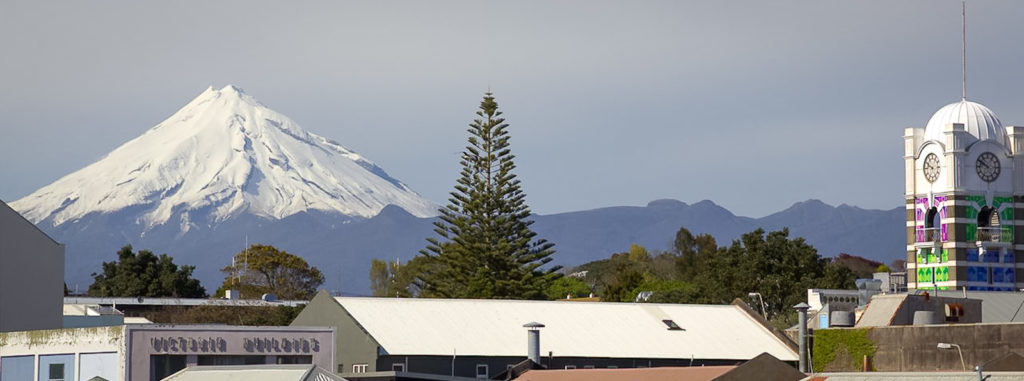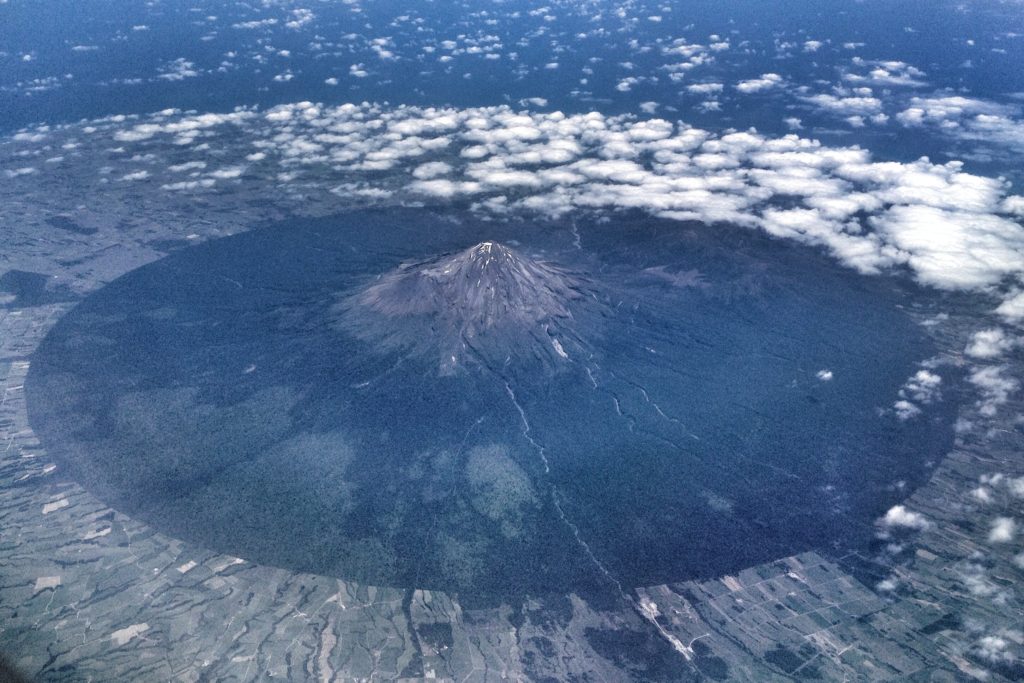
What does a photograph depict? What are your expectations? Tag this one with visible elements such as sky, blue, mountain, egmont, ridge, tree, norfolk pine, tower, clock, shops and categorise it by landscape, travel or urban. But if you knew more you might add the contexts of spring, dormant, opportunity or shopping. And if you lived in New Plymouth, you might discard it entirely knowing you had hundreds of better shots. Because if you lived there you’d have the knowledge and time to realise better opportunities.
This photo says ‘shopping’ to me. I still have the back-pack, the trail shoes and the fleece that I had to buy in a shop beside our hotel in order to climb Mt Taranaki. I was only in New Plymouth to meet a ship that arrived a week early having come from Norway by the arctic route under escort of a Russian nuclear powered ice breaker. And I was only in New Zealand for the Rugby World Cup and this was after our interests were eliminated and the rest of the family had flown home.
So this photo speaks to me privately of whim, opportunism, delight, luxury, luck and exotic lands. One of our party had an acquaintance who lived in New Plymouth who was kind enough, perhaps determined, to escort four seasoned business travellers as far above the snowline as they could tolerate. Which wasn’t the peak nor anywhere close. The cold defeated us while he seemed undaunted in shorts and a sleeveless fleece. A climb he does a dozen time a year. Who wouldn’t?

Seeing this beautiful scenery each day comes with a price. I see the potential for nuée ardente and that’s pretty much what I see first. Think Pompeii because it’s a stratovolcano just like Vesuvius. Regular eruptions and pyroclastic flows over hundreds of thousands of years have created fertile lands to tempt settlers with temporary succour. Settlers may forget that temporary is the right word. And succour is also the right word if your clocks are measured in human generations. It’s only 16 generations of that clock since the last major Taranaki eruption. The Maori know that Taranaki is resting between exertions. They may not have always known it feeds on the Pacific Plate that is subducting below. Those oceanic rocks are descending back into the earth, being consumed by it. From deep below Taranaki, digested by heat and pressure, they will be regurgitated. That’s why there’s a circular exclusion zone masked as a national park, ‘a forested protected area around a volcano’. And it explains why the GNS are monitoring the situation carefully, understandably using remote surveillance techniques.
Each member of our ‘adventures’ team was gifted a wonderful book by one of our more visionary managers. A Continent on the Move is worth a look if you can find it. And I see it’s gone to a second edition. Brilliant.

Leave a Reply